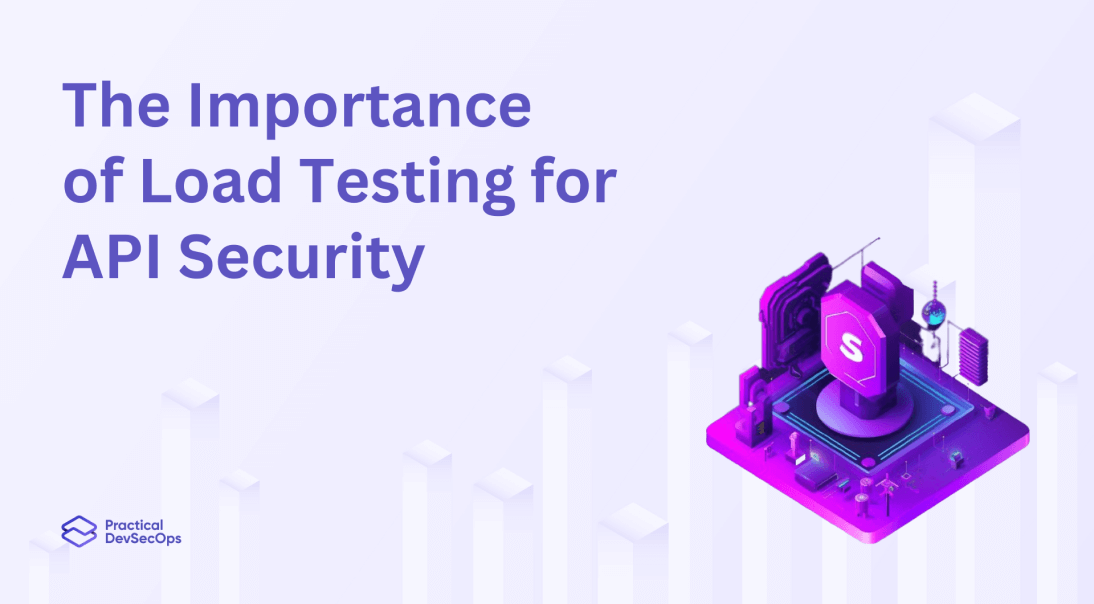In today’s interconnected digital world, APIs (Application Programming Interfaces) have become the backbone of many software applications and systems. APIs enable seamless integration and communication between different software components, allowing them to exchange data and enable functionality. However, with the increasing reliance on APIs, there is an urgent need to ensure their security and reliability. One crucial aspect of load testing APIs for security is it helps assess the robustness and resilience of an API under various loads and stress conditions.
What is Load Testing APIs for Security?
Load testing APIs for security involves conducting tests that focus on assessing the performance and potential vulnerabilities of APIs under heavy loads. It is crucial to evaluate how APIs handle high volumes of concurrent requests and ensure they remain resilient against cyber threats. By subjecting APIs to stress tests, organizations can uncover performance bottlenecks, potential security vulnerabilities, and weaknesses that may only manifest under heavy traffic conditions.
Why Load Testing APIs Matters
Load testing APIs involves subjecting an API to simulated traffic and usage levels to identify potential vulnerabilities and weaknesses. By putting an API through rigorous tests, organizations can proactively identify and address security flaws before malicious actors can exploit them. Here’s why load testing is vital for API security:
- Identifying Performance Bottlenecks: Load testing helps uncover performance bottlenecks that can impact the reliability and availability of an API. Organizations can pinpoint potential performance issues by simulating large loads and optimizing their API’s scalability, response time, and throughput.
- Mitigating DDoS Attacks: Load testing enables organizations to assess their API’s resilience against Distributed Denial of Service (DDoS) attacks. By simulating high loads and traffic patterns similar to those of an attack, organizations can evaluate the effectiveness of their DDoS mitigation measures and strengthen their API defenses.
- Validating Authentication and Access Controls: APIs often rely on authentication and access controls to ensure that only authorized users or applications can access sensitive data or perform specific actions. Load testing can validate the effectiveness of these security mechanisms and identify any vulnerabilities that could lead to unauthorized access.
- Assessing Rate Limiting and Throttling: Load testing allows organizations to determine whether their API effectively implements rate limiting and throttling mechanisms. These measures are crucial for preventing abusive or excessive usage of the API, protecting against unauthorized data scraping, and ensuring a fair distribution of resources.
- Detecting Vulnerabilities: Through load testing, organizations can uncover potential security vulnerabilities, such as input validation issues, injection attacks, or inadequate error handling. By finding and addressing these vulnerabilities early in the development lifecycle, organizations can significantly reduce the risk of successful attacks and improve overall API security.Also Read, What makes API Security so Important in 2025?
Best Practices for Load Testing APIs for Security
To maximize the effectiveness of load testing APIs for security, organizations should follow these best practices:
1. Define Meaningful Test Scenarios and Metrics
- Identify and define realistic test scenarios based on expected user behavior and traffic patterns.
- Set specific goals and metrics to measure performance, such as response time, throughput, error rates, and number of successful requests.
- Craft test scenarios that focus on potential security vulnerabilities, such as large file uploads, injection attacks, or excessive authentication attempts.
2. Utilize Realistic Workload Patterns
- Simulate realistic user workload patterns by analyzing historical data or observing real user behavior.
- Evaluate the API’s performance and security posture under both normal and peak loads.
- Use load testing tools capable of generating concurrent requests and emulating different user behaviors.
3. Incorporate Stress Testing
- Perform stress testing to evaluate the API’s maximum supported load and identify its breaking point.
- Apply high-load scenarios to gauge how the API handles extreme traffic, ensuring it remains robust and stable under pressure.
- Monitor important system resources, such as CPU usage, memory consumption, and network bandwidth during stress testing.
4. Test Authentication and Authorization Mechanisms
- Test the effectiveness and scalability of authentication and authorization mechanisms under load.
- Verify that access controls are properly enforced, and unauthorized requests are rejected.
- Assess the API’s ability to handle high concurrent authentication attempts and detect potential brute force attacks.
5. Evaluate Data Validation and Security Protocols
- Assess how the API handles potential security threats like input validation, SQL injection, and Cross-Site Scripting (XSS) attacks under high loads.
- Verify the effectiveness of encryption protocols and secure communication channels during load testing.
- Evaluate the API’s response to structured and unstructured data inputs to uncover potential security weaknesses.
6. Monitor and Analyze Test Results
- Continuously monitor and analyze test results using appropriate tools and dashboards.
- Identify performance bottlenecks, security vulnerabilities, and potential system failures.
- Establish benchmarks and compare test results against them to observe performance improvements over time.
7. Implement Iterative Improvements
- Act on the insights gained from load testing by addressing performance bottlenecks and security vulnerabilities.
- Optimize code, adjust resource allocation, and fine-tune configurations to improve API performance and security.
- Regularly re-evaluate and conduct iterative load testing to ensure constant improvement.
Real-World Example: Securing an E-Commerce API
To illustrate the importance of load testing for API security, let’s consider a real-world example. Imagine an e-commerce platform that exposes an API for processing customer orders and payments. Load testing this API can help ensure its security in various scenarios:
- Heavy Traffic Loads: Load testing can evaluate how the API performs when there is a surge in traffic, such as during flash sales or seasonal peaks. It helps identify if the API can handle the increased load without compromising security and ensuring a smooth shopping experience for customers.
- API Abuse: Load testing can simulate different types of API abuse scenarios, such as sending large amounts of fake orders or making excessive requests. By doing so, organizations can detect potential vulnerabilities and strengthen their API’s defense mechanisms against such abuse.
- Payment Processing: Load testing allows organizations to verify the security and reliability of the API when processing payment transactions. It helps ensure that sensitive customer payment data is protected and that the API can handle the load without any interruptions or security breaches.
Conclusion
Load testing APIs plays a vital role in maintaining the security and reliability of APIs. By subjecting APIs to simulated loads and stress conditions, organizations can identify vulnerabilities, performance bottlenecks, and weaknesses before they can be exploited. Load testing is particularly important for APIs that handle sensitive data, such as customer information or financial transactions. By investing in load testing and proactive security measures, businesses can promote trust, protect their users, and safeguard critical digital assets.
Practical DevSecOps offers an excellent Certified API Security Professional (CASP) course with hands-on training through browser-based labs, 24/7 instructor support, and the best learning resources to upskill in API security.
Start your journey mastering API security today with Practical DevSecOps!







0 Comments